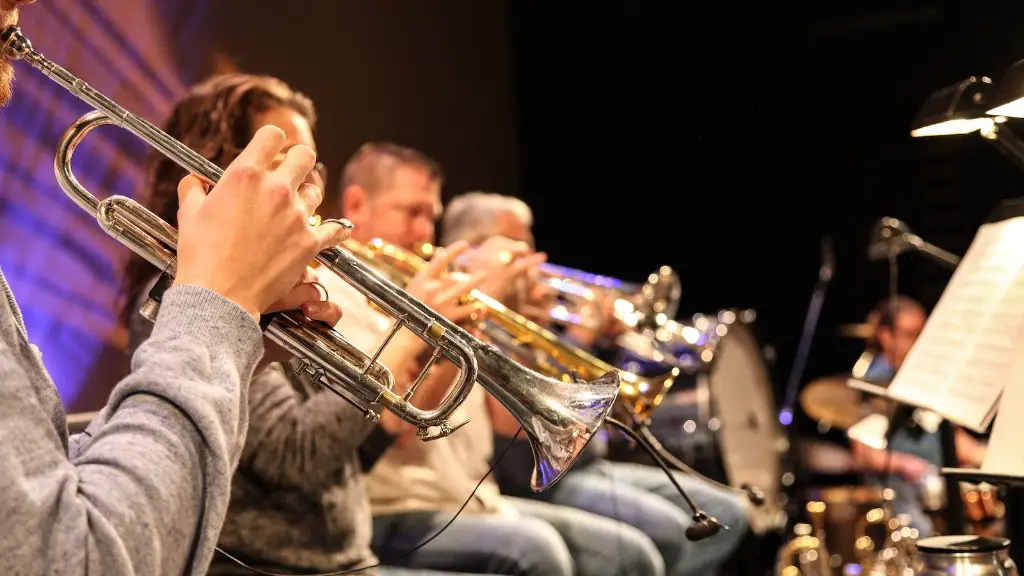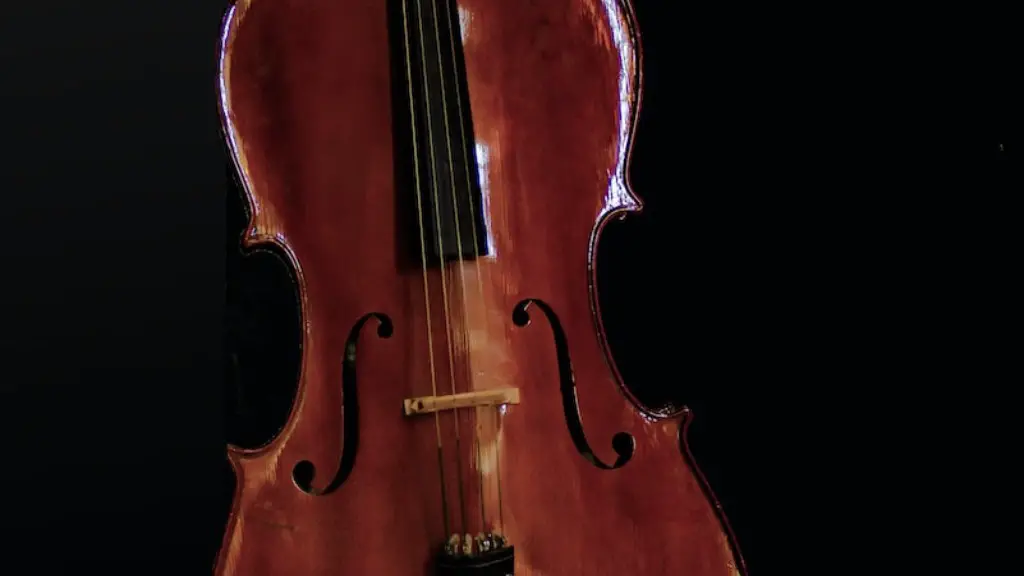The trumpet is a brass instrument that produces sound through the vibration of air. It produces a vibrant and powerful sound that is used in many different types of music. Its sound has been admired for centuries, and it is considered one of the most important instruments in modern music.
The trumpet works by vibrating the air inside its metal tubing. This vibration is caused by the player’s lips when they buzz against the instrument’s mouthpiece. The buzzing causes a wave of pressure to travel through the tube, which then creates sound waves in the air around it.
The trumpet’s sound can be manipulated by changing the shape of the mouthpiece, controlling how much air enters, or changing how quickly or slowly it vibrates. Different notes can also be achieved by pressing valves located at various points along the trumpet’s tubing. These valves can create different lengths of tube for different pitches.
How Trumpets Make Sound
Trumpets are brass instruments that produce sound using a series of vibrations. The sound is created when a musician blows air into the instrument, vibrating the lips as they do so. This causes the air column inside the trumpet to oscillate at a certain frequency, producing a note. The musician can alter the frequency of this vibration by controlling the pressure of their lips and adjusting their embouchure. This allows them to play different notes and create melodies.
The pitch produced by a trumpet is also affected by the length of its tubing. Longer tubing creates lower notes, while shorter tubing produces higher notes. The shape and design of the bell also affects how sound is produced and can be altered to create different tones or timbres. Trumpets have been used for centuries in music, from classical compositions to jazz solos, and their unique sound is an integral part of many genres today.
How the Trumpet Produces Sound
The trumpet has a unique and powerful tone that sets it apart from other brass instruments. Its sound is produced by vibrating air in the instrument’s tubing, which is then amplified by the bell at the end of the instrument. The vibrations are created when a musician presses their lips against a metal mouthpiece, creating a vibration of air which passes through the instrument’s tubing. The pitch of the sound changes as different valves and slides are used to adjust the length of tubing that vibrates. This, along with variations in embouchure (mouth position) and breath control, helps create a dynamic range of tones.
The trumpet can produce both bright, loud sounds as well as softer, more mellow tones. By varying breath pressure and embouchure, musicians can create an expressive range of sound. This makes it a great choice for jazz improvisation, where subtle changes in tone can create exciting musical effects. The trumpet’s tone also carries well above other instruments in an ensemble setting, making it an important part of any large band or orchestra.
How the Player Influences the Sounds of a Trumpet
The sound of a trumpet is produced by the combination of the player’s breath and their embouchure. The player’s embouchure is formed by pressing the lips against the mouthpiece and shaping them into an airtight seal. This enables air to pass through, creating vibrations in the column of air within the trumpet. The strength and speed of these vibrations depend on how much air and pressure is used. The player can control the sound of their trumpet by manipulating these variables. By adjusting their breath pressure, they can create higher or lower notes, as well as louder or softer sounds depending on how hard they blow. Additionally, adjusting the angle at which they press their lips against the mouthpiece can create different tonal qualities.
Finally, moving their fingers and tongue around inside their mouth while playing will also affect how they produce sound on a trumpet. Moving their tongue changes how much air passes through, while moving fingers can alter the shape of their embouchure to create different notes and tones. All together, these factors combine to produce a unique sound that is influenced by both the player’s technique and skill level. Ultimately, it is up to each individual player to determine how they want to express themselves musically.
The Role of the Bell in Trumpet Sound Production
The bell of a trumpet is an integral part of the instrument’s sound production. It amplifies the sound that is created by the vibration of the trumpet’s air column and allows players to project their music further. The shape and size of a trumpet’s bell also has an effect on the overall timbre and tone quality. When a player presses down on the valves, air is directed through different paths which, when combined with the bell’s shape, produces different frequencies. A wider, deeper bell will produce a warmer tone while a narrower, shallower one will produce brighter tones. Furthermore, the angle at which the bell is facing can also affect how sound is projected; a more open angle will allow for greater projection while a more closed angle will produce less volume.
The role of the bell in producing trumpet sounds cannot be overstated; its shape and size determine both volume and tone quality, while its direction determines how far sound will travel. By understanding these principles, players can better control their sound production and create beautiful music! Adjusting these aspects can have dramatic effects on sound quality.
The Benefits of Properly Tuned Valves in a Trumpet
Tuning the valves on a trumpet is an important step in helping the instrument produce a rich, full sound. The valves are what direct the air flow that creates the sound. If they are not properly tuned, then air will leak out and the sound produced will be weak and quiet. Properly tuned valves will ensure a strong, clear tone that can be heard from far away.
Trumpets use three main parts to produce sound – the mouthpiece, bell, and valves. The mouthpiece is used to create vibrations in the air column and create a distinct pitch. The bell amplifies this sound and helps project it further away from the instrument. Lastly, the valves control how much air passes through the trumpet at one time. By adjusting them, you can modify your trumpets tone by altering its volume and pitch.
Having properly tuned valves on your trumpet is essential for achieving an optimal sound quality. You’ll be able to play with more clarity as well as project your music further out into an audience or recording space. It’s also beneficial for those who want to practice regularly as tuning your valves can help prevent any unwanted noises or sounds from occurring while you play. Tuning your trumpet’s valves can drastically improve its overall tonal quality.
Understanding and Exploring Mutes for Different Sounds on a Trumpet
Trumpets are wind instruments that produce sound by vibrating the lips when air is blown through the mouthpiece. The pitch of the sound created can be modified by varying the speed of lip vibrations. By using mutes, a trumpet player can create different tones and sounds. Mutes are typically made of metal, plastic, or cork and alter the sound by shortening or narrowing the bell of the instrument. They also reduce the volume and change the timbre of the tone. In addition, mutes can be used to create a variety of special effects such as “wah-wah” or “staccato” sounds.
Trumpet players often experiment with different types of mutes to achieve a desired sound or tone. These instruments are highly versatile and can be used to produce various musical genres including jazz, classical, and pop music. With practice and experience, a trumpet player can use mutes to create unique sounds that reflect their individual style and creativity.
Closing Words
To produce sound, a trumpet uses the player’s lips, breath and tongue to vibrate a column of air in the instrument. The length of the trumpet’s tubing affects the pitch of the sound that is produced, as does the size of the bell. By controlling the amount of air passing through and the tightness of their lips, players can create a range of pitches from low to high. By manipulating these variables and making use of musical technique, a trumpeter can create a huge variety of sounds. Trumpeters have been able to produce beautiful music by manipulating these simple elements for centuries, and will continue to do so for many years to come.




